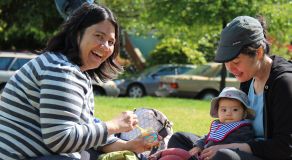The community planning process is conducted in four phases:
- Phase 1: Launch
- Phase 2: Plan and policy generation
- Phase 3: Draft plan
- Phase 4: Plan approval
Phase 1: Launch
During the first phase, we will:
- Compile relevant city-wide policies
- Review the existing research on neighbourhood issues
- Discuss the needs, challenges, and opportunities related to the plan's key areas of focus with the community
- Develop a local area profile
About the local area profile
The profile will include:
- Demographics (e.g. population, age, household income, tenure, etc.)
- Forecasts and demographic changes, housing stock (e.g. type, age, tenure, etc.)
- Assessment of potential change and development under existing zoning
- Synopsis of existing land use and built form
- Community service needs
- Cultural spaces
- Health indicators
- Sustainability indicators
- Social development issues
- Business activity
- Water/sewer/storm infrastructure
Details of the Profile will be provided in the Launch phase.
Phase 2: Plan and policy generation
Step 1: Community-wide policies
This step will look at key themes and topic areas.
During this second phase, we will:
- Generate policy options
- Conduct a broad review of options, leading to refinements
- Recommendations some options
- Incorporate the policies into the overall community plan.
Step 2: Sub-area plans
This step will involve open meetings and dialogue with stakeholders, to collaboratively produce sub-area plans.
During this step, we will:
- Review existing policy, land use, and transportation patterns
- Analyze urban design and economic options for new development, including alternative land uses
- Examine potential public benefits and improvements to public spaces
- Identify public open space opportunities, and opportunities to optimize street design
- Enhance active transportation and transit service
Step 3: Community action projects/plans
This step will focus on ways to take action on pressing social issues, placemaking initiatives, community development opportunities, and other actions that can be accomplished during the planning process.
Some initiatives may be project based (e.g., urban agriculture and community gardens). Others may be more comprehensive explorations of issues and opportunities for community and service providers to pursue.
Phase 3: Draft plan
At this phase, all the elements of the community plan will be brought together for broad community review.
During this phase, we will:
- Prepare a draft community plan that combines the community-wide policies and sub-area plans
- Identify recommended priorities and other implementation-related activities
- Conduct a final, broad public review of the draft plan
So that participants will be able to see how their ideas have been incorporated into the plan, we will provide a clear links between the ideas generated in Phase 2, and the policies we include in the plan.
Phase 4: Plan approval
At this phase, we will finalize the plan and prepare to present it to Council.
During this phase, we will:
- Modify and refine the draft plan based on feedback
- Prepare a report for Council
- Forward the draft plan to Council for adoption, and to the Park Board and the School Board for consideration of parks and recreation, or education-related matters
 How we plan liveable and sustainable neighbourhoods
How we plan liveable and sustainable neighbourhoods